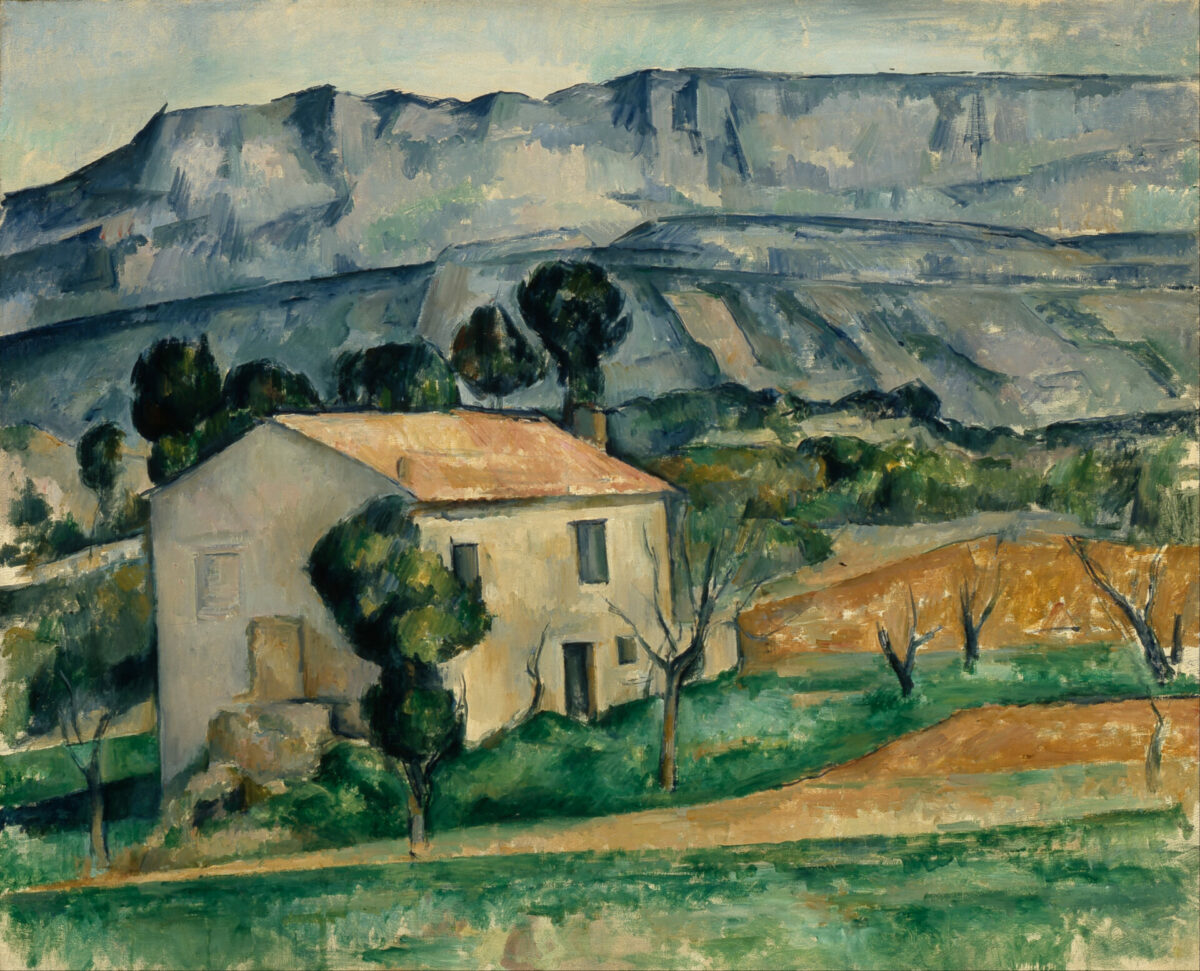I confess that when I was a boy, my family and I took part in the undoing of American public life.
We didn’t see it that way, of course. Until I was ten years old, we lived in a tiny four-room house on a dead-end street in one of the coal-mining towns of northeastern Pennsylvania. The three children slept in one room with me, the eldest, in the top bunk, my brother in the bottom bunk, and my sister in a small bed in the corner. Then my second sister was born, and we really did need some more room, and my father was making good money selling insurance.
We had bought a vacant lot two blocks away, one that the boys in that neighborhood had used as a sandlot for playing ball. There we were going to build what we called “the new house.” It would have electric baseboard heat–no more fiddling with the fire in the coal burner, no more watching the coal trundle down the chute from the truck into the basement bin, no more carting the soft white-gray ash from the furnace to the street. We probably would have had to replace the furnace anyway, because the last coal breaker in our town ceased operation in the same year. We would also have a shower–what had served as one for my father and mother was just a nozzle stuck in a pipe in the basement, set over a drain in the slab floor. It meant a second bathroom too; I never saw a house till then that had more than one. What, after all, did you need the extra one for?
On the dead-end street, houses were cheek-by-jowl, and all the old people had vegetable gardens, terracing the hill behind them. The best place to play, then, was the street, which swarmed with the 13 children who lived right there, along with cousins and other kids around the corner. At the end of the street, there was an old deer path that led to a tumble of glacial rocks and the bottom of a cliff, and a mine trail that led to the top of the cliff and eventually to a network of trails, stripping holes, a mountain of loose coal where I collected fossils, an abandoned car or two, the chassis of a school bus, and a blueberry field from which you could see ten miles east and west, while the town and its crazy streets was nestled into the mountain to the south, that rose up like a wall. I loved it.
Now, we were going only a three-minute walk away, so that I still enjoyed much of what made my neighborhood a good place to grow up in. But there were two or three features of the new houses that would end up being like a continental divide, consigning to our fading memories a way of life centered upon the neighborhood. The first of these, and the most obvious, was that the new houses did not have front porches, just a tiny stopping place at the front door, often without even a roof overhead to keep the rain off anybody with the effrontery to stand there, knocking. All of the houses on the dead-end street had big front porches, where mothers and grandmothers might be sitting in the daytime, taking a rest from the housework, and chatting with each other from porch to porch, and keeping an eye on the children and their play. It felt to me, when I was a little boy, that each of the four old ladies across the street could serve as a grandmother: my own grandmother, my cousin’s grandmother, my classmate’s grandmother, and a nice old lady who must have had ten or twenty grandchildren elsewhere in town. They knew me and I knew them, and that was just what life was like.
But there weren’t any such porches or relationships, on our new street. People lived two and three houses down, whom I never saw. There were back porches, to be sure, but that made for no conversations from house to house to house. We still often played on the street, but nobody could sit in the front on a porch and watch us do it. Things were turning inward.
The second difference was that the lots were bigger, meaning both that the houses were farther apart and that they were set farther back from the street. The front yard became a place where nothing ever happened; it was a buffer, making the front door more of a challenge to approach. We still played in back yards, especially in a yard owned by an old man who let us use it for a ball field, serving the function of the sandlot we eliminated. But I do not remember, even once, that anybody watched us play, simply because there was no vantage for doing it. Only children, I have long believed, can make a straggle of houses into a neighborhood, and we did still have a lot of those–but that too would quickly become a thing of the past.
Now that I look back on it, I think there was a connection between the third difference and the coming dearth of children; a veritable dagger to the heart. It was that the houses themselves were bigger and more expensive. Oh, they were still quite modest by current standards; in our new house, the boys had their one bedroom and the girls had theirs. We had six rooms on one floor, and a big basement yet to be finished, with a half-bath, a laundry room, and a wide area where we’d set a pool table and a ping-pong table. But when you commit yourself to extra housing expense, you suddenly become wary of having too many children; while in earlier days, if you were among the working poor, you wanted as many children, as many loyal hands, as you could have. Bigger rooms, too, and more space indoors, suggest that indoors is where your life is going to be spent. That was hardly possible before. You could not spend all day, every day, within four walls, simply because there wasn’t any room to do anything, and why would you want to be there anyway, when you could hear the shouts of children outside?
Every house in my town built since that time shares these characteristics. How, then, do you pay for one? I often hear that both parents must work outside the home in order just to make ends meet. But why should it be so? The basic necessities of life are, in constant dollars, cheaper than they were when I was a boy. Housing is the main driver of the extra expense, and it is not because of the materials of construction, which are often but sticks and chalk, or because of the artisanal work in wood, stone, or plaster that you might find in old Victorian or colonial homes, but almost never in homes built in the last fifty years. Part of the explanation is that the houses are simply bigger, and the lots are bigger, as I have said. But part is also that the market can bear the expense, and that is due to widespread cultural choices we have made, even when, as a whole, these choices have perverse results. If families depended on a single income, housing prices would plummet, simply because there would not be a great supply of buyers to keep the prices high.
Two-income families tend to be small and late to form, and they cause women to assume as a matter of course that they should be in the job market earning money. That means, as a consequence, that both men and women delay marriage, nor do they have any strong sense that each sex is meant for the benefit of the other. The result is that we have a great number of single people buying or renting houses, and that too drives prices higher; and when people do marry, we still have a person-to-house ratio (and a person-to-square foot ratio) that is much smaller than it was when I was a boy, which already was smaller than it was when my father and mother were growing up, as I can readily gauge by the 1940 census tallies of the streets where they lived.
American liberals talk a great deal about assistance to the poor, but even if I concede their good will in this regard, I fear that neither they nor most self-styled conservatives want to reexamine the habits, both economic and sexual, that have impoverished the working class, set the middle class on the wheels of a machine that literally sends their extra income up the chimney, and eviscerated neighborhood life. I am glad I grew up when I did, when front porches were for people, and people for the neighborhood, and the neighborhood for a genuinely human life.
Image Credit: Paul Cézanne, “House in Provence,” 1880s.






4 comments
Brian
Two blocks doesn’t really seem very far away. Surely you could still walk to everywhere you used to be able to walk? To me the true breaking point seems to be all the schools that were built in the 60s to accommodate the boomers that were built out on the outskirts of towns, which meant that kids had to be bussed there, which severed their relationships to their communities, both the residential neighborhoods they used to walk through, and the business districts that they used to be immediately adjacent to when they got out of school. Of course, I’m a child from the 70s/80s, so I don’t really know for sure, all I know is it was all thrown away, for nothing.
Rob G
I’d say that some of this depends on whether the neighborhoods had sidewalks or not. Walking to the local elementary school, or even the junior or senior high school if you lived close enough, was much less worrisome if there were sidewalks. In my opinion building neighborhoods without them was one of the stupidest things ever thought up by town planners.
Rob G
One of the interesting things about newer houses, those built from the 70’s on, is that the larger ones often have a front porch which is long, but too narrow for any actual activity. It seems as though they’re there for show rather than for use, for what can you really do on them? You may occasionally even see porch furniture on them, while seldom if ever seeing anyone sitting on it.
The neighborhood I grew up in was in a small town suburb, middle class, with the great majority of the houses having been built in the 20’s and 30’s. Virtually all of them had front porches, and generally speaking those porches were used. Back porches were not as common, and when present were always smaller (but still used).
I remember very vividly when a younger, “modern” couple with three children moved in a couple houses down, and not along afterwards began to build a patio. What made this interesting was that none of us kids knew what a patio was. Theirs was the first in the neighborhood (this would have been about 1967 or so), and when it was completed what we considered odd about it was that it was bigger than the front porch! At that time almost no one had a back porch that was bigger than their front porch, and it seemed strange.
Richard H. Thomas has described the move “from porch to patio” in an essay of that title, and later the patio evolved into what is today basically the large back porch known as the “deck.” (No one had these when I was a kid either.)
Matt Stewart
We have a patio and a front stoop and we enjoy sitting on both, depending on how the evening plays out. I do wish we had a bigger porch. We had a tight range of options when we were looking to buy, though, and the house we bought wouldn’t wear a larger porch well. Given the market we were working with, we’re grateful. Your point brings to mind one of the founding essays from the early years of FPR:
https://www.frontporchrepublic.com/2009/03/front-porch-republic/
Comments are closed.